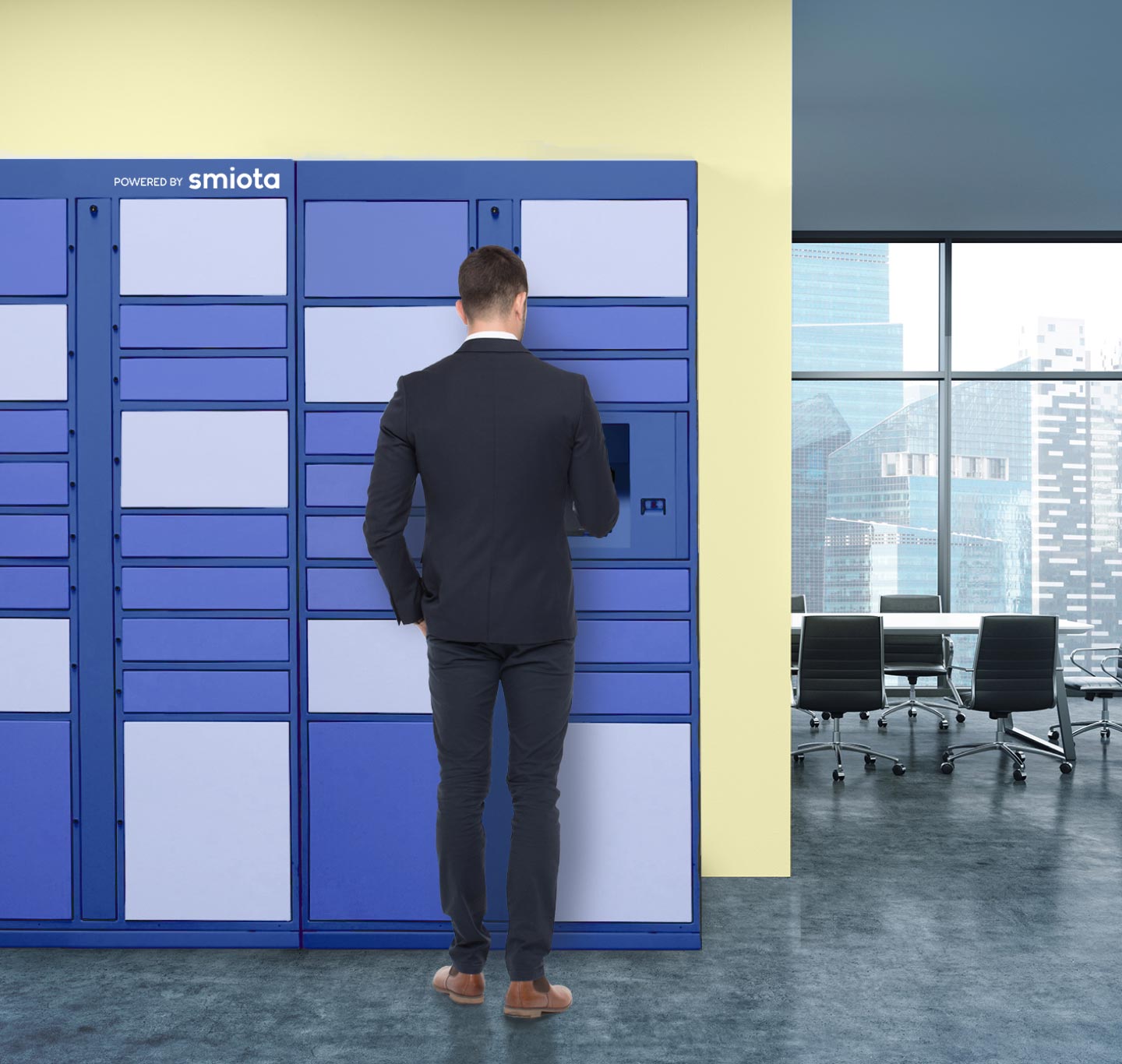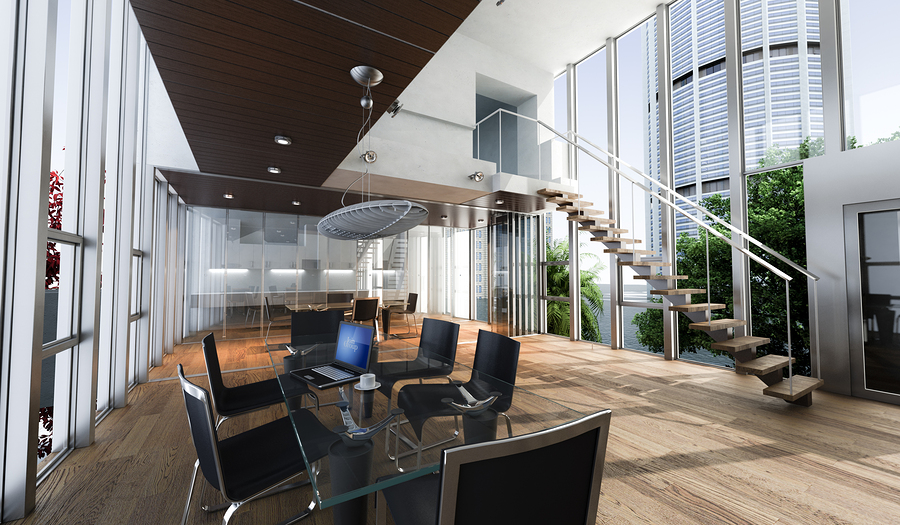The way forward-thinking companies work is evolving, and with it, what they demand from their working environments. So if you want your commercial development to attract everyone from bright up-and-coming startups to large corporations and digital nomads, you’ll need to familiarize yourself with the latest trends.
Let’s dive in.
Joining classic and modern design
Redeveloping an existing structure, the old and the new will converge — and you can make it work to your benefit. In office design, marrying existing architecture and modern features will create a genuinely unique space sure to make potential tenants’ jaws drop.
K2 Space, a London-based office design firm, says says, “From a design perspective, it means preserving the craftsmanship built into the existing architecture…bringing once dilapidated steel, brick structures, and warehouses back to life.”
A few examples of striking a perfect balance:
- Install stained concrete or hardwood floors instead of carpet
- Expose and paint beams and HVAC systems instead of installing a drop ceiling
- Keep masonry work exposed instead of drywalling
If you’re building a property from the ground up, you can still make it reminiscent of times past. Use materials like steel, wood, and brick to bring classic textures into your brand new space.
Closing the book on open concept
The love-it-or-hate-it open concept design trend is fading. According to one online survey, people would make significant concessions to get private office space.
Here’s what people said they’d give up — brace yourself for the last stat.
- End of year bonuses: 13%
- Five vacation days: 13%
- Summer Fridays: 16%
- Windows and natural light: 17%
- Office coffee machine: 27%
You read that correctly — over a quarter of respondents said they’d give up access to free coffee in exchange for a little privacy.
Workplace morale seems to be on the line, too. Respondents working in open concept offices revealed some pretty shocking things about their well-being.
- Held back their true thoughts and opinions while on calls: 31%
- Reported a decline in overall quality of health: 16%
- Considered leaving their jobs because of the office layout: 13%
These stats don’t imply you need to revert to a cubicle layout of yore. Instead, give your tenants a variety of working environments to choose from. A modernized design might include open, collaborative spaces paired with smaller “productivity pockets.” That way, people can escape the chaos for some serious heads-down work, client meetings, and so on. For example, designated call rooms are an excellent addition to modern offices. Workers would rather chat about Project XYZ in a soundproof room than in an open office.
Bringing the outside in
Humans crave a connection to nature, so it should come as no surprise that biophilic design — design that creates a visual tie to the outdoors — is trending in modern offices. Biophilic design is more than just an amenity, though. Without it, companies risk productivity deficiencies. In fact, 10% of employee absences can be attributed to working in a space that lacks a connection to nature.
There are endless ways to use your outdoor environment to influence the design and aesthetic of your facility. Here are a few ideas:
- Install planters outside of windows
- Negotiate a partnership with a plant subscription service
- Create a serene, professionally landscaped courtyard
- Plant a living wall indoors
To keep the natural light flowing in (and plants happy), don’t forget to opt for large, floor-to-ceiling windows.
Embracing the coworking atmosphere
Market researchers say there will be upwards of 21,000 coworking spaces in the world by the end of this year, and that number that could swell to 30,000 by the end of 2022. If you’re talking members, there will be north of 5 million people — from freelancers to part-time, startup, small business, and even corporate workers — all operating out of coworking spaces in three years.
Long story short? Coworking isn’t a passing trend. So when you’re conceptualizing what kind of tenants you want to host, “coworkers” are worth considering.
Common elements of coworking buildings:
- Centralized location
- City views
- Separate areas designated for independent working, team collaboration, networking, and relaxing
- Accessibility to technology like copiers, printers, and projectors
Something to keep in mind with coworking spaces is the increased need for security, so make sure to consider amenities such as a dedicated receptionist area, security cameras, and smart package lockers.
Being bold
Wave goodbye to blasé eggshell white walls, drop ceilings, and fluorescent-lit office spaces, and make way for bright, exciting working environments designed to spark creativity and productivity.
Take wall colors as an example. Using color psychology as a guide, you can select a bold-colored paint to transform your space into a worker’s haven.
Popular colors for offices along with the emotion they are believed to elicit:
- Blue: trust, logic, efficiency
- Red: courage, strength, excitement
- Yellow: friendliness, creativity, positivity
- Green: balance, harmony, restoration
Modern offices feature more than just bold wall colors, though. Think lime green walls alongside with sleek, stark white kitchen counters, and thrifted furniture.
Focusing on worker wellness
Workers are beginning to realize the positive effect that health and wellness can have on their career and overall quality of life. And to attract this self-aware talent pool, CEOs are investing in their people.
As a result, there’s a surge of wellness- and experience-driven amenities in today’s offices. And we’re moving well beyond the “adult playground” amenities like ping-pong tables and game rooms.
Some examples:
- Yoga studios
- Meditation areas
- On-site gyms
- Retail shops
- Walking and jogging trails
- Rock climbing walls
Any amenity that can help workers achieve the balance between work and life is going to draw the most forward-thinking tenants.
High-tech mailrooms
It’s hard for businesses to ignore the increasing number of package deliveries to the office. More than just general office supplies come through the mail these days. Employees also have personal packages delivered to work, and for a good reason — they don’t want to fall victim to package theft.
Businesses are tackling the mounting package management issue with high-tech smart lockers that can facilitate personal and corporate package deliveries. That way, workers can focus on their primary tasks and no one has to handle package sorting and distribution. It’s a different, value-added amenity that we expect to pick up steam in the coming years.
—
Future-proof your development by installing smart lockers by Smiota.




